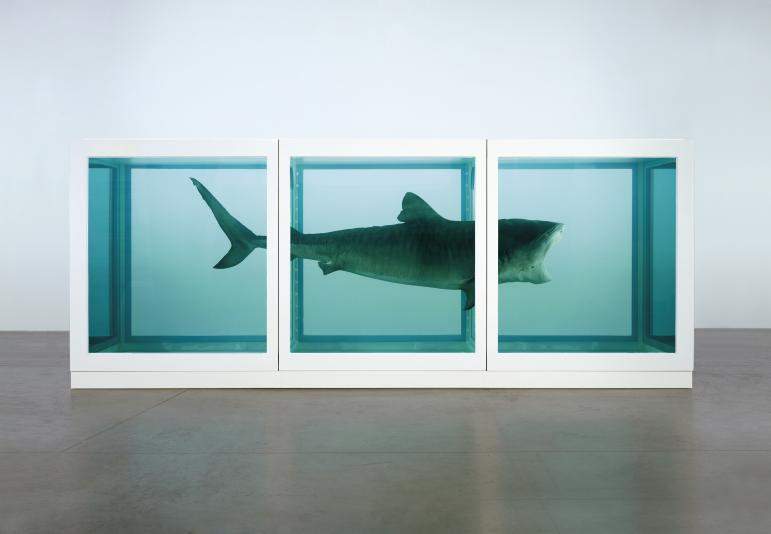The artnet news magazine does not mince words, dedicating an article to the sharp drop in the price of Damien Hirst’s works. Works of art are often bought by collectors as investments, in the hope that their value will increase over time: however, this does not seem to be the case with the works of Damien Hirst, since, as explained in the article, the value of Hirst’s works has plummeted over the past decade.
Journalist Tim Schneider analyzed 19 lots that had been sold during Beautiful Inside My Head Forever, the major auction of Hirst’s works held at Sotheby’s, whose tenth anniversary these days (it took place, in fact, on September 15 and 16, 2008), and which have been auctioned again in the intervening years. Of these 19 lots, as many as 17 depreciated, with an overall loss of nearly $3 million: in 2008 they had totaled $8.1 million, while in subsequent sales the overall total did not go beyond $5.2 million. Schneider also calculated that 11 of the 19 lots lost roughly 40 percent from their original sale price. For collectors, Schneider stressed, this is a “bloodbath.”
However, beyond the “horrible” results of the following sales, Schneider also points out that conclusions about Hirst’s career should not be rushed. The journalist reports the opinion of U.S. art market expert Felix Salmon that judging the value of Hirst’s art on the basis of his auction results over the past decade would be foolhardy: in fact, the artist has continued to successfully sell his works and achieve remarkable results, the only difference being that he has done so mostly through direct sales, and this has made the auction houses less relevant. “Assessing Hirst’s fortunes by examining the visible market,” Salmon pointed out in an article in the New Yorker, “made sense only until September 15, 2008. After that, Hirst began selling his works directly to collectors, and he stopped playing by the rules established by the gallery system. His gallery owners became furious, but they could do nothing about it. So, freed from the constraints of the galleries, Hirst could make the works he wanted, and sell them at the prices his collectors wanted to pay. And that’s what almost no gallery artist can do.”
Then consider that sales of the pieces shown at the grand 2017 Venice exhibition touched $330 million even a month before the show closed. In essence, according to Schneider, no firm conclusions can yet be drawn. Perhaps, Salmon speculates, the 2008 buyers bought the works because they liked them and simply wanted to have them. Perhaps, Schneider wonders instead, both “true believers” and “canny resellers” participated in the auction, expecting that the works would reach their peak value in the future. Again, perhaps today’s buyers have decided that the pieces Hirst created then for Sotheby’s are simply “not that desirable.” A more precise and comprehensive analysis will therefore be needed, Schneider concludes, to determine which of the scenarios is the most truthful, and thus what will happen to the market for Hirst’s works in the future.
At the moment, those launching into predictions is economist Don Thompson, quoted in today ’sIndependent article on the same subject: presumably those who bought Hirst’s works in the hope of making a good investment are unlikely to recoup the money they spent. “The value of his more traditional works, such as the animals in formaldehyde,” Thompson explained, “probably peaked during the auction.” And back in 2013, theIndependent continued, specialist Philip Hook warned collectors that the “bubble kept alive by Hirst’s public relations machine will sooner or later burst.”
Pictured: Damien Hirst, The Physical Impossibility of Death in the Mind of Someone Living (1991; glass, painted steel, silicone, shark and formaldehyde solution; 217 x 542 x 180 cm)
 |
| Hirst, soaring prices and collectors' bloodbath. Artnet's analysis |
Warning: the translation into English of the original Italian article was created using automatic tools. We undertake to review all articles, but we do not guarantee the total absence of inaccuracies in the translation due to the program. You can find the original by clicking on the ITA button. If you find any mistake,please contact us.